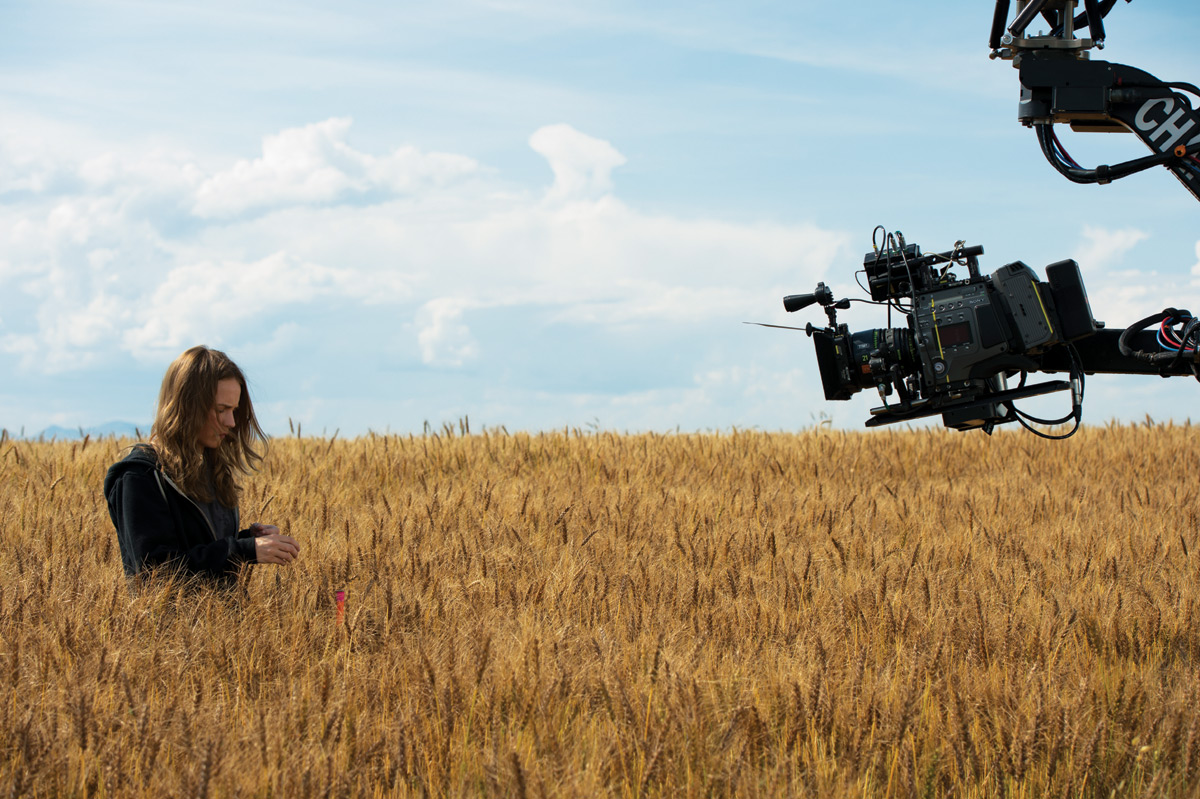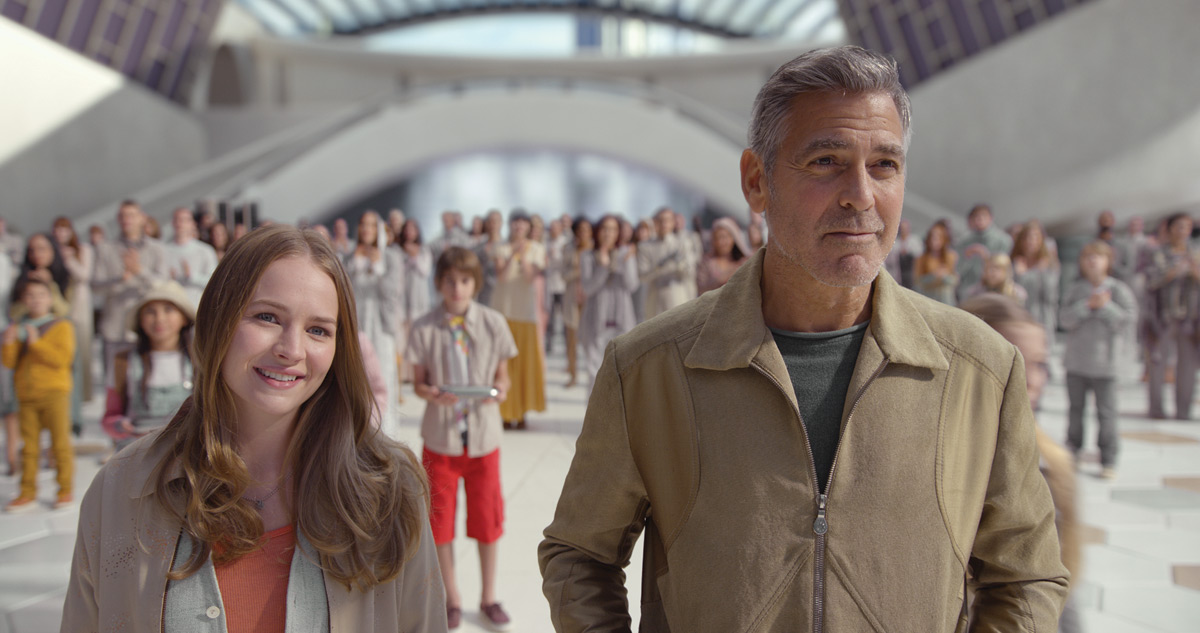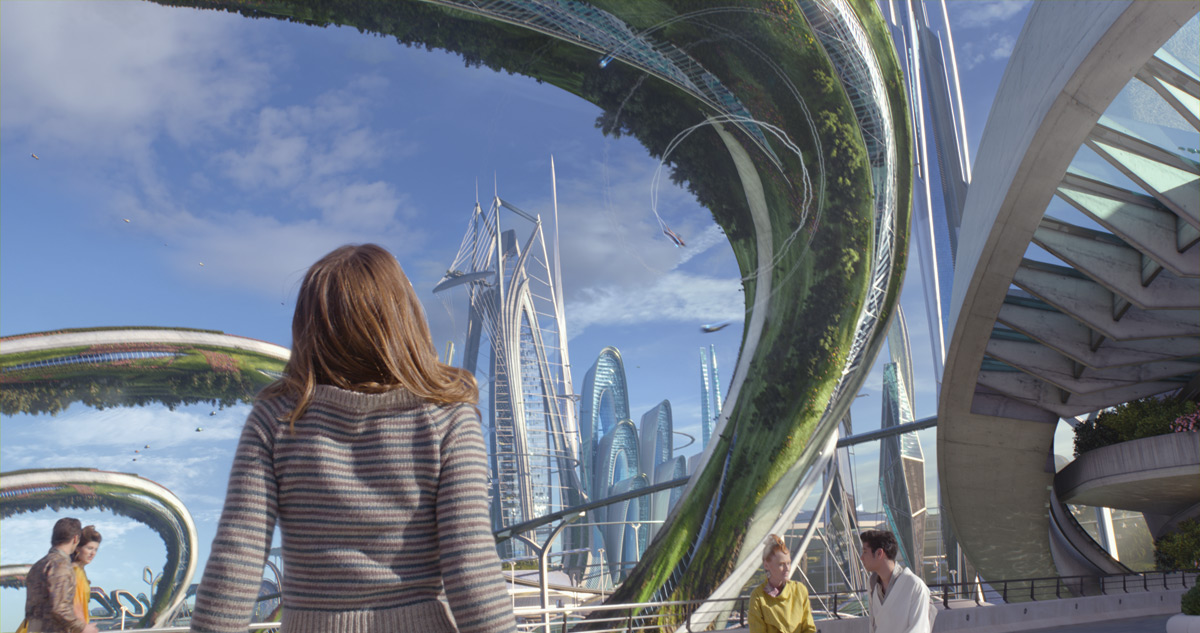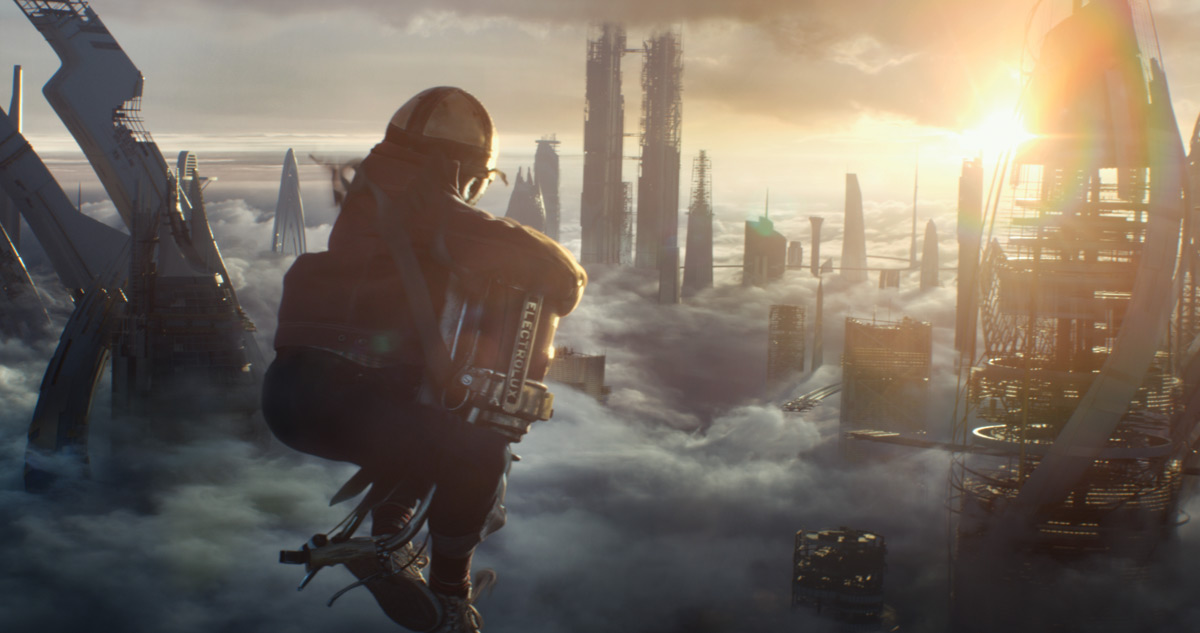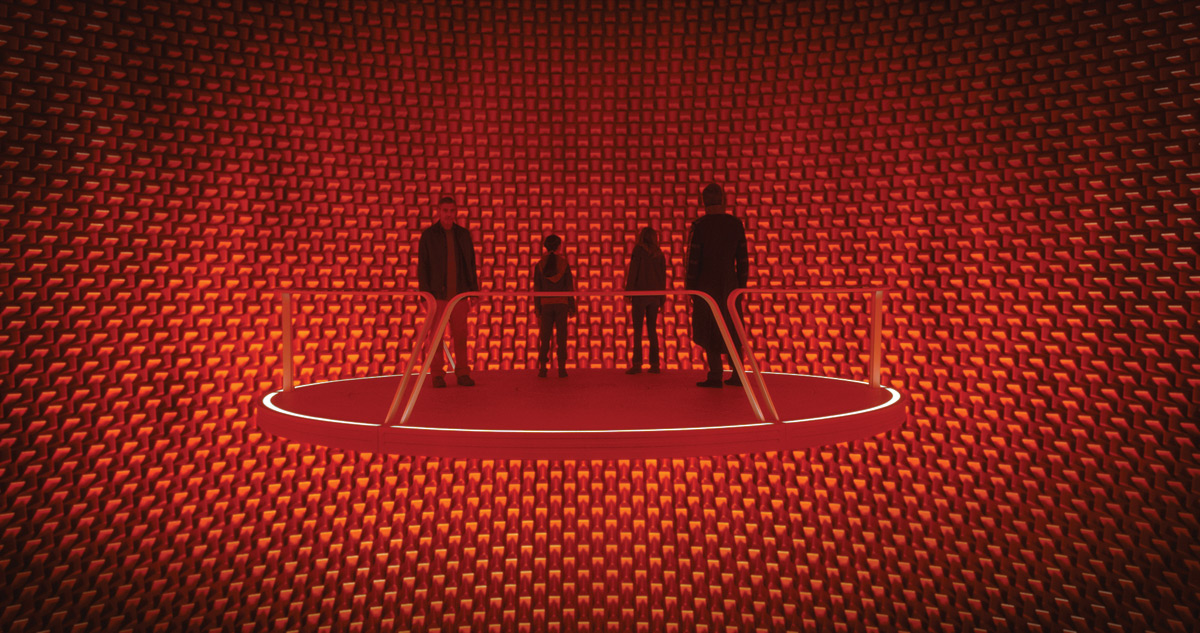Claudio Miranda, ASC, takes the (theme park) ride of his life for Disney’s new family adventure, Tomorrowland
For more than half a century, the name Walt Disney has been synonymous not only with feature films and animation, but with theme parks. Exploiting the marquee value of park attractions proved hugely lucrative with the Pirates of the Caribbean film franchise, somewhat less so with Mission to Mars. Tomorrowland, a new summer adventure ride from Pixar visionary Brad Bird, takes a look at one possible future through the eyes of the past, depicting a world (imaginary or perhaps not) where art and technology combine to evoke the promise of old 1950s Popular Mechanics covers with Disneyland’s original utopian theme park area, Tomorrowland. In Bird’s film (which may have more danger and darkness than U.S. trailers let on), a science-curious teenager (Britt Robertson) and a former boy-genius inventor (George Clooney) pair up to discover the secrets of an enigmatic place that seems to exist in their collective memory.
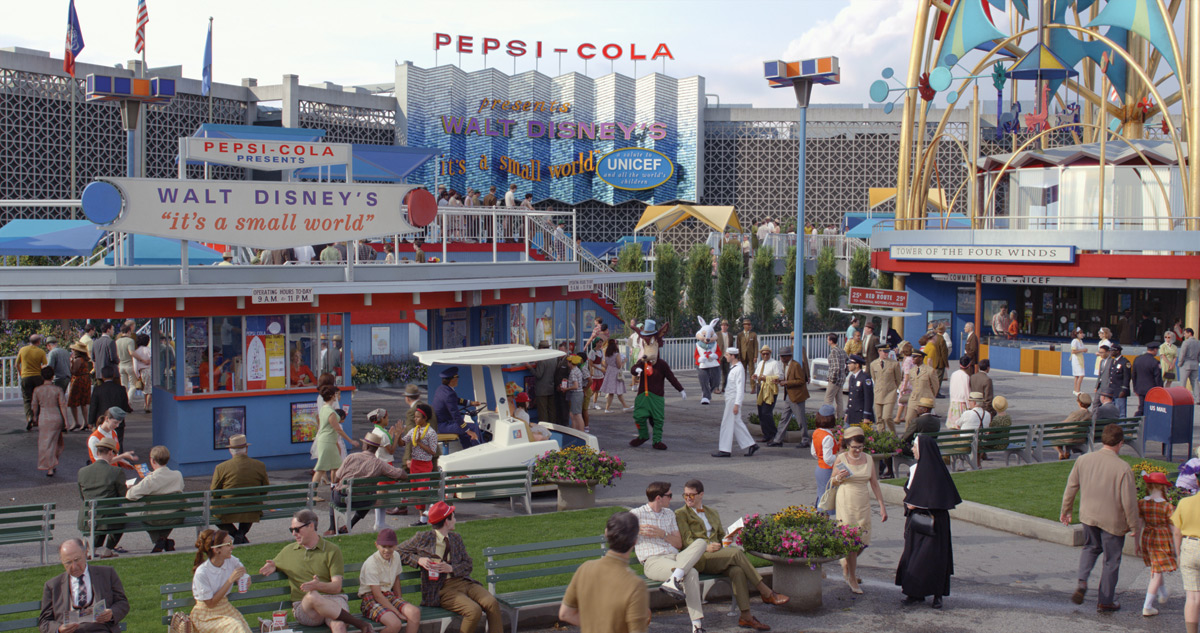 Bird [see Exposure] says he always envisioned a 4K release, which meant a high-resolution workflow – well within the wheelhouse of his cinematographer, Claudio Miranda, ASC. With The Curious Case of Benjamin Button, Tron: Legacy, the Oscar-winning Life of Pi and most recently Oblivion, Miranda’s work often includes elements of the fantastic, without sacrificing credibility. In recent years the DP has shot mainly with Sony cameras, needing dynamic range for 4K capture, and enjoying the benefits of the F65’s mechanical shutter. His choice was actually brand-agnostic.
Bird [see Exposure] says he always envisioned a 4K release, which meant a high-resolution workflow – well within the wheelhouse of his cinematographer, Claudio Miranda, ASC. With The Curious Case of Benjamin Button, Tron: Legacy, the Oscar-winning Life of Pi and most recently Oblivion, Miranda’s work often includes elements of the fantastic, without sacrificing credibility. In recent years the DP has shot mainly with Sony cameras, needing dynamic range for 4K capture, and enjoying the benefits of the F65’s mechanical shutter. His choice was actually brand-agnostic.
“When I do my tests,” he insists, “I take the labels off the cameras, because I want to look at the images objectively to see what they make me feel.”
Miranda tested seven different capture systems for Tomorrowland – film as well as digital – on a Shotmaker, with all cameras mounted on a single truss. He output every test at 4K and showed them on a 60-foot screen. “In daytime,” he explains, “nothing beat 15-perf IMAX, which was very sharp and clean. But on night shoots, I let the city expose itself, just available light, and the IMAX looked almost black-and-white – kind of cool, but not appropriate here because we were so low on the toe of the film there was practically no color information.”
While Bird had hoped to shoot IMAX, Miranda pointed out that the lighting package would be huge. “If we had more real interiors, it might have been possible to shoot film,” he acknowledges. “But with such massive sets, increasing the light levels to compensate for film would be tough – and expensive. Plus digital allows you to do certain things that wouldn’t have been physically or financially possible, like the projections on Oblivion, so having the F65 as our primary wound up being the way to go.”
Early on, Bird told Miranda how the scenes set in Tomorrowland would have “utter clarity” and be totally immersive, with no image softening. The 4K RAW shoot utilized Master Primes and Fuji Premier zooms out of Keslow Camera. Sony’s newer, more compact F55 also saw action, “most notably as A-camera on a very long Steadicam shot,” relates 1st AC Dan Ming, who also worked with Miranda on Life of Pi. “It had just been released, so we had almost no off-speed frame-rate options, which limited its usefulness.”
Though accustomed to pulling for Miranda at about T1.4 (“Claudio loves the quality of light at that stop”), Ming uncovered a different issue complicating shooting at those levels. “What looked fine in HD might not look sharp in 4K,” he reveals. “We found the lenses had to be much better than what Zeiss considered to be within tolerance to maintain sharpness across the whole frame at 4K. Pulling in 4K requires much more vigilance; wide lenses were always the most critical to keep an eye on, especially with the range of temperature conditions, which could affect focus marks and prevent lenses from being able to focus to infinity. I found doing a cold night exterior establishing at T1.4 was about ignoring the marks and scrutinizing the monitor.”
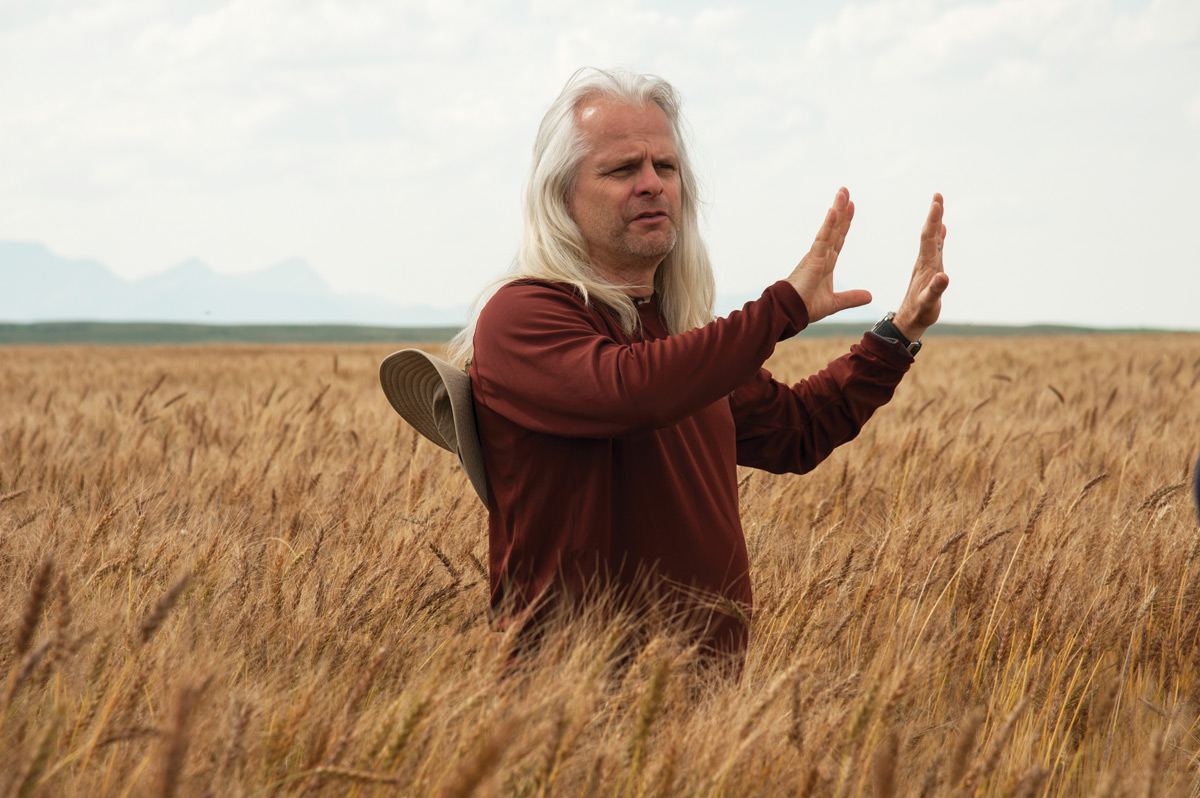
Tomorrowland required more than a year of previsualization, supplied by Halon, which also spent months aiding the editorial effort with postvis work. “There were a lot of boards, too,” Miranda elaborates, “but with the amount of previs, I made sure to spend time with those artists to make sure the lenses being used weren’t going to be delivering imagery that was out of line with what we would do practically. While a previs can show it’s possible to do anything in CG, you don’t necessarily want to always go that route.”
VFX Producer Tom Peitzman heartily agrees. “There are many folks who just immediately jump to the ‘shoot it all in a blue box’ solution, but I’m very much of the school that tries to get as much in camera as possible, limiting CGI to where there is no physical way to build or photograph. If you can give a director and DP a place they can light, one that actors can work in and relate to that isn’t just a blue environment, that also enables cutters to edit the footage without as much guesswork.”
While Peitzman’s credits reflect multivendor and single-vendor shows (M:I:III, M:I: Ghost Protocol, Alice in Wonderland), the decision to go with Industrial Light & Magic for the VFX was fairly straightforward.
“With a project like this, you have to be especially concerned with maintaining a consistency of look,” Peitzman adds. “I have a long relationship with ILM going back twenty years. Staying with one vendor – or allowing that vendor to do some supervised subcontracting – helps maintain a similar pipeline. You don’t have sequences that depart a lot from the way others look, which helps with the credibility of presenting something like this whole other unique Tomorrowland environment.
“Many vendors can do 4K, but with the file-storage issues and rendering times required, very few have developed their game to that same high level as ILM for this volume of shots,” Peitzman continues. “Digital models have to be built and textured to a higher level of detail, and matte edges tend to show more in 4K than 2K. Fortunately, the artists who transitioned from analog VFX to digital started off their careers understanding photography in the real world. They know how sunlight and other sources affect an image, which can be a challenge for younger artists. When you can tap both skill sets, the work is better, which really matters with the immense amount of detail visible in 4K.”
Tomorrowland’s retro look was not just a matter of aping the future depicted in Look magazine and other 50s periodicals, but also drawing on the more far-out architecture of our modern era. During a football game, Peitzman saw a TV commercial that featured a location that seemed appropriately futuristic, and recorded it on his iPhone. “I showed it to Brad and our production designer, Scott Chambliss, who had been doing his own research and already liked the idea of using this designer’s work.”
Santiago Calatrava’s sweeping and filigreed designs look like objects freed from the constraints of gravity. The location, Spain’s City of Arts and Sciences in Valencia, would allow the filmmakers to get a large portion of Tomorrowland in camera with actors. “It was absolutely the right call to tackle it in this fashion,” Peitzman states, “as Calatrava’s work let us ground the movie in physical geometry with physical lighting.
“Every modern city has elements of the old and the new,” he continues. “And Scott really embraced the modern style of Calatrava while also looking at Frank Lloyd Wright and Hugh Ferriss. We took inspiration from other designers like Syd Mead, and even a page from Walt Disney. In old archival films of Disney talking about EPCOT, he described the design as resembling a wagon wheel, with spokes radiating outward. That kind of functionality helped with the reality of our Tomorrowland.”
Peitzman points out that the earliest spitball design sessions date back three years, but all were in agreement that while the city of Tomorrowland needed a unique style, it also had to be both fun and comprehensible. “Even science-fiction elements like jet packs and other futuristic vehicles were treated in ways that relate to the different uses people have for a motorcycle today,” he shares. “Some employ a bike for transportation, others for touring, speed, competition and off-road.”
While the camera package was prepped in L.A., shooting ranged from Vancouver to Alberta, Canada, then on to Florida and Spain, before finishing in Los Angeles, with another pair of overseas splinter unit detours squeezed in. Ming reports the camera package weighed around 6,000 pounds.
“Equipment management and a well-organized camera department was so key,” Ming explains. “We built a Filemaker-based tracking system that imported the scan-out from Keslow Camera and allowed us to see where any given piece of equipment belonged. We could search by case number or barcode, pull up a picture of how each case was packed, see when gear was received or returned, and we could also generate a manifest. The only piece of gear missing at the end was a Ronford-Baker quick-release plate!
“Another thing we did on Pi and Tomorrowland was use digital camera reports built in Filemaker,” Ming continues. “The 2nd camera assistants on both units would use their iPhones to do the reports; at the end of the day data would be emailed to production, visual effects, and editorial. They would import it into their databases.
“DIT Alex Carr also wrote a script that could take camera data and automatically import it into his shot metadata so it was married to the footage. We would give the assistants an updated file every day, so any shot could be looked up instantly, which came in extremely handy for 2nd unit or when we needed plate information.”
Except for a folder containing hard copies in case of catastrophic failure, the system was paper-free, which the 1st AC describes as “the best part.”
RAW capture was recorded to AXSM card via AXS-R5 onboard recorder. Miranda and DIT Carr worked from Sony BVM-E250 OLED monitors, with Carr grabbing selects for the cinematographer to grade. This data went to Sixteen19, which provided Colorfront Express Dailies with the proper looks applied.
The film’s trailer features an “oh, gasp” moment when the touch of the young heroine’s finger on a pin magically transfers her from a police station to an otherworldly field – a scene conjured by a very traditional approach.
“We shot the field first and then lined it up on stage,” Miranda reveals. “The actress just had to hit the exact position each time. Some people think it’s a synthetic transition, but it’s just a well-planned and executed cut.” To provide dynamic reveals in this fantastic landscape, Miranda often employed the 73- and 32-foot Hydrascopes.
Day exteriors in Spain and Tomorrowland sets in Vancouver both required heavy sun control and interactive light effects. “Key Grip Kim Olsen used four to six 80-ton heavy-duty construction cranes with 60-by-60 diffusion,” reports Gaffer David Tickell. “Kim would change the diffusion for blacks, blue screens or bounces, depending on the shot requirements. He built a couple of large effects wheels – half blacked out, half open – rigged in front of 18K Arrimax to create the effect of sun going in and out of clouds.”
Different levels of Tomorrowland’s technology were reflected with their own lighting schemes. “When [George Clooney’s] character goes into a room filled with old-fashioned metallic mechanical hardware, we went all tungsten,” reports Miranda, “which felt appropriate to the look of the equipment. Then there’s a more high-tech room full of monitors, which is lit primarily with the on-screen content.”
Tickell elaborates: “We mainly used LED tape-rope hybrid [3200 to 5600 Kelvin] and RGB, as well as PixelPro modules and Philips ColorBlast and iW units.” LED pot lights were deployed in the floor and other custom effects employed lenticular panels as major components, though Tickell allows that, “we even used crinkled aluminum foil in some areas. Almost every set was run through board operator Benoit Richard’s dimming console. Claudio has an amazing eye, so Ben’s console became a very important tool for fine-tuning the look.”
Management of VFX resources, especially with respect to shot review and data transfers, was key to streamlining post. “The Creative-Cartel’s Jenny Fulle approached us early on,” Peitzman explains. “She had developed this software and structure and asked if we would be their guinea pig, and it worked out very well for all our VFX pulls. There were hiccups – color and I/O issues – that always crop up early on, but they got handled very fast through an automated system loaded with checks and balances that removes most human errors. When something isn’t exactly correct to the last decimal point, it just won’t upload and reports the error immediately.” Cartel’s Joust software is the heart of the system, which also utilizes Colorfront’s Transkoder engine.
To facilitate ILM’s digital set-extension work, LIDAR scans were performed in Spain on the Calatrava exteriors and many interiors. “That gave us geometry we could hinge upon, along with the actual photography,” notes Peitzman. “In this way, ILM could build out those assets in a manner that was meaningful for the storytelling. Their VFX supervisor, Craig Hammack, always tried to base the terrain surrounding the city on real imagery.”
Peitzman marvels over the 16-bit 4K OpenEXR file format. “It allows so much latitude above and below where the image needs to be that Claudio has an incredible amount of flexibility in color-timing, taking shots beyond how they were shot because the files have so much depth.”
As of this writing, Miranda’s DI plans involve two weeks at Skywalker Ranch, and another week in Los Angeles, working with Bird, Peitzman and Company 3 colorist Stephen Nakamura. “Before starting a DI, I have the colorist look at the screeners to see what I started out with,” Miranda explains. “The DI can become a different animal for me. I pull everything off and start from scratch with the base grade. Once we have the whole scene as it plays, I’d rather massage it through rather than lay-in a blanket solution.”
And then there is the IMAX blow-up, which requires additional finessing. “Their sharpening process can make things look very electronic,” Miranda remarks. “While it gives the image a lot of snap, it can hurt the feel of things, so in the past I’ve had them back it off. And that’s kind of funny, because it reminds me of when we started shooting digital, because it was all about emulating film. And that didn’t always work so well, sometimes it felt even more digital. Now, we’ve at last taken the handcuffs off digital, and there are all sorts of dramatic possibilities.”
by Kevin H. Martin / photos by Kimberley French


